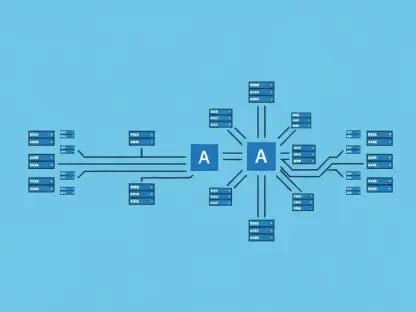Cloudflare’s Secure Access Service Edge (SASE) platform has taken a significant step forward by introducing hostname-based egress policies, streamlining network traffic management for organizations worldwide. Driven by strong customer demand and engineering innovation, this milestone marks the first phase in Cloudflare’s broader initiative to enhance support for policies based on hostnames and domains. With this newly released feature in open beta, organizations can now define egress policies that align more closely with their specific security and compliance needs, offering them greater control over internet traffic egress behavior. This development represents a leap in network security, as it simplifies the way companies manage and secure network access, ensuring the right safeguards are in place when connecting to external services.
1. Understanding Egress Policies and IP Access Control Lists
Egress policies are pivotal for organizations seeking to regulate how their internet traffic exits to external networks. These policies enable control over various aspects, such as the source IP address and geographical location used for egress, facilitating strict adherence to regulatory and security requirements. One core aspect of these policies involves leveraging Internet Protocol (IP) Address Control Lists (ACLs), a security measure built to offer IP-level access control. While using IP ACLs can enhance security by confining network access to specific IP addresses, they should be supplemented with robust authentication mechanisms like Single Sign-On (SSO) and Multi-Factor Authentication (MFA).
For instance, Acme Co, a hypothetical enterprise, purchased a dedicated egress IP address from Cloudflare to access a regulated banking application, which restricts access to traffic from that specific IP. This scenario illustrates the importance of pairing IP ACLs with hostname-based egress policies to create a comprehensive security scheme. Instead of exclusively depending on dynamic IP address management, organizations can now implement hostname-based policies to ensure traffic consistency and maintain secure access to vital external services.
2. Innovation in Hostname-Based Egress Policies
By integrating hostname-based egress policies, Cloudflare’s SASE platform extends its capability to tailor internet access more precisely. This feature, supported by layers of technological breakthroughs, addresses customers’ challenges by simplifying the policy formulation process, allowing administrators to define access rules based on hostnames instead of fluctuating destination IP addresses. The critical issue that hostname egress policies solve is the complexity brought about by ephemeral infrastructure, which may alter destination IPs frequently, making direct IP-based policies cumbersome.
Prior to this advancement, organizations like Acme Co had to contend with constant updates to destination IP lists whenever external service providers changed IP addresses. Many companies developed custom scripts to cope with these changes, maintaining lists of up-to-date IP addresses for policy application. Cloudflare’s new offering circumvents these difficulties, letting IT administrators configure egress rules directly using domain names, effectively removing complications associated with changing IPs and providing a more user-friendly approach to ensuring network traffic remains compliant with core business requirements.
3. Expanding with Domain, Category, and Application Control
Building on this innovation, Cloudflare’s egress policies are not limited to individual hostname control. The introduction of egress policies by domain, content category, and specific applications is another critical enhancement. For example, companies can now regulate access to entire domains, such as all subdomains under *.bank.example.com, instead of setting individual policies for each. This offers considerable efficiency advantages in policy management, making it easier for organizations like Acme Co to set broader, more impactful security measures.
Moreover, Cloudflare has extended the scope of egress policy management to consider categories and applications, which are crucial for businesses that rely on modern web services and cloud applications. Organizations leveraging applications like Slack or web resources in specific categories, such as cryptocurrency, gain the flexibility to apply universal policies across multiple endpoints without needing to track address changes or individual subdomains. This uniform approach to policy application significantly reduces management overhead, allowing IT departments to implement security postures that are agile, effective, and easier to update as needs evolve.
4. Engineering Challenges Behind the Development
The introduction of hostname-based egress policies posed unique engineering challenges for the Cloudflare team, primarily regarding the protocol layers involved in traffic management. Cloudflare Gateway operates by examining traffic both at the transport layer (layer 4) and the application layer (layer 7). However, egress policies must be applied at layer 4 to ensure that the source IP address is selected before a network connection is established. This requirement meant that the system had to interpret hostname information, typically associated with layer 7, at a layer where this information isn’t readily available in the IP or TCP headers.
To resolve this technical challenge, the development team creatively leveraged Cloudflare Gateway’s integrated Domain Name System (DNS) resolver capabilities. By capturing DNS queries intended for specific hostnames and mapping them to synthetic IP addresses, they managed to synchronize DNS resolutions with network traffic. This innovation allows the system to correctly apply egress policies and fulfill hostname-based requirements, even in a context where the destination IP might change due to dynamic infrastructure setups.
4. Capability for Domains, Categories, and Applications
Further extending its functionality, Cloudflare’s SASE platform permits the creation of egress policies not only by specific hostnames but also by entire domains, content categories, and software applications. This functionality is particularly beneficial for managing broader access controls and easier policy deployments in environments with diverse internet access needs. By crafting egress policies for domain-level control, such as covering all hostnames within a single domain, organizations can avoid the tedious task of creating multiple individual rules. This capability fosters streamlined administration and reinforces security by applying uniform policies across numerous access points.
Moreover, the introduction of category- and application-based egress policies signifies a milestone in the platform’s evolution, facilitating the control of traffic associated with thematic groupings of websites or specific services. Businesses now have the added advantage of defining overarching rules for accessing content within certain environments, such as e-commerce platforms or particular communication tools like Microsoft Teams or Slack. This is particularly advantageous for enterprises utilizing multiple resources within the same category or application, as it allows for centralized policy management that is both efficient and scalable.
5. Addressing Engineering Challenges in Implementation
The implementation of hostname-based egress policies on Cloudflare’s SASE platform was not without its technical challenges. One significant hurdle was the need to apply egress policies at the transport layer before any packet data containing the application layer information, such as a host name, is sent. This requirement stems from the nature of egress policies, which aim to handle IP address selection before network traffic commences to prevent any connection disruptions.
Cloudflare tackled these challenges by harnessing its powerful DNS resolver infrastructure. When a user attempts to connect to a hostname, the Gateway resolver responds with a temporary, randomly allocated IP address known as a “synthetic IP.” This enables the user’s network traffic to be correctly mapped and recognized by the Cloudflare Gateway, which ensures that traffic is managed according to egress policies before leaving the user’s network. Through this clever engineering solution, the association between the hostname and destination IP is temporarily created, allowing for policy application and facilitating seamless, policy-driven network egress.
6. Enhancing Egress Processes for Networks Worldwide
With Cloudflare’s extensive global presence, operating in over 330 cities across more than 125 countries, ensuring that DNS and network traffic lands on the same server was another complex obstacle. Given the scale and network architecture, where during connection time traffic might be processed by different servers, shared state among servers was not an option.
Cloudflare overcame this challenge by ensuring that both DNS and network traffic are channeled through the same tunnel, landing them on the same server, which supports consistent application of egress policies. This approach bolsters Cloudflare’s commitment to providing thorough and reliable network management services without sacrificing flexibility or security. As organizations continue to navigate the ever-challenging cybersecurity landscape, solutions like Cloudflare’s enhanced SASE platform offer a compelling way to manage networks with greater precision and reduce vulnerabilities.
6. The Road Ahead for Cloudflare’s SASE Platform
Looking forward, Cloudflare is poised to make significant strides in its SASE (Secure Access Service Edge) platform by broadening onramp options and enhancing support for hostname-based egress policies across its ecosystem. These advancements aim to enable enterprises to fully leverage domain, category, and application-based rulesets amidst diverse networking environments. This move toward more detailed and adaptable egress policy management highlights Cloudflare’s dedication to delivering secure, efficient, and dynamic networking solutions.
In the future, Cloudflare might employ sophisticated AI and machine learning strategies to further refine and automate network traffic management. By maintaining a focus on innovation, Cloudflare encourages businesses to prepare for a more secure and interconnected future, offering comprehensive, scalable security solutions integrated into their operations.
The introduction of hostname-based egress policies in Cloudflare’s platform marks a significant progression in network security management, providing organizations with increased flexibility in handling network traffic and boosting security, compliance, and operational efficiency. Upcoming advancements promise expanded compatibility and potential integration with advanced technologies, paving the way for superior network management strategies. As global businesses pursue digital transformation and robust security infrastructures, Cloudflare’s offerings remain pivotal, helping organizations navigate the complexities of modern networking requirements.









